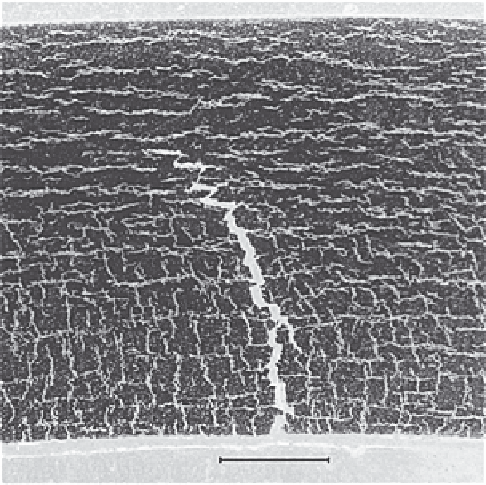Environmental Engineering Reference
In-Depth Information
texture;
time.
The radial hydrides visible in metallographic cross sections can be present
in a wide variety of sizes and distributions as well as fractions of the total
hydrides present.
Radial hydrides in zirconium alloy cladding are undesirable because
they reduce the critical stress intensity required to propagate a radial crack
through the wall of the cladding during handling or transportation, as shown
by mechanical property data in the previous section. This is illustrated in
Fig. 4.38, where it is seen that cracks propagate along radial hydrides, but are
blunted in the circumferential hydride region. For this reason considerable
attention and effort is expended to defi ne the conditions for radial hydride
formation and evaluate their effect on mechanical properties and the per-
formance of the fuel, particularly during hypothetical accidents. One of the
objectives of the dry storage regulations in the United States is to limit the
conditions that could result in hydride reorientation and affect fuel recon-
fi guration during handling and transport.
Since one of the preferred hydride sites is the grain boundary, RXA
material with equi-axed grains is more susceptible to radial hydride forma-
tion compared to SRA material with grains elongated in the axial direction.
This is illustrated in Fig. 4.40 for SRA Zircaloy-4 and RXA Zircaloy-2.
4.38
Cracks propagating due to a hoop stress (along horizontal
direction in fi gure) (Daum
et al
., 2005).
200
μ
m

Search WWH ::

Custom Search